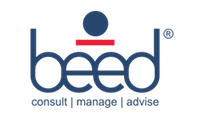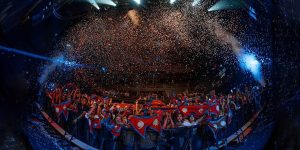My first introduction to beed was when I came to the office to drop a wedding card to a friend of mine who worked here. What a unique office setting I remember thinking. People were sitting not in cubicles, but around a long L shaped shared space amidst tasteful blue and red minimalist furniture.
My friend explained that everyone sat around the same room, including the CEO. It was hard to get used to; I expected at least he would have a corner room with an oversized mahogany table, perhaps, and a slew of certificates hanging on the wall.
To my amazement, my friend pointed to a section of the room that shared the running table with the rest of the team. I still remember thinking I might have misunderstood and the connecting room (that is actually the pantry) must be the CEO’s room. It was only on joining beed that I realized that the CEO actually sits with the rest of the team in the beed Lab. In fact, during the first recruitment phase, otherwise strong promising candidates had to be turned down because they insisted on a separate cubicle.
Another interesting thing about beed was that everything seemed to have a name. The beed OT (Open Thoughts meeting room), beed baithak (reception), beed mint (accounts), beed lab (working area for everyone) and even beed smokes (smoking zone). It was all a bit too overwhelming at first, but the impact of the brand was indisputable. Over the four years that I have spent at beed, the various pieces of the brand unfolded themselves to reveal the nugget: how the culture and team members are aligned with the brand. Some aspects of the beed brand that stands out:
DREAM, ACHIEVE, CELEBRATE
If the DNA of human beings determine their personality, it is not surprising that an organization’s culture is also based on its DNA. At beed, our DNA is “Dream, Achieve, Celebrate”. And these three words sum up the beed culture:
Dream: setting goals. Sometimes so big that some of us have a hard time believing it is practical, but it is the big dreams that undoubtedly motivate us.
Achieve: working hard. Our hard work aims at the sky and it is amazing how some of the seemingly far-fetched strategies are actually implemented.
Celebrate: celebrating achievements. It is the celebration that brings the team together because even if each person is not directly involved in working on a particular assignment or goal, the whole team shares in the celebrations, sharing and rejoicing in each other’s hard work taking ownership of the team work.
For newcomers, the word ‘celebration’ evokes a puzzled smile. They wonder how this is going to play out, and are amazed as the number of get-togethers. For example, the day I joined beed there was a party going on, and most staff have taken part in at least one celebration within a month of joining.
WORKING IN TEAMS
Consulting is a business that warrants working in teams, and being a team player is a highly valuable skill set, this is not something new. beed is no different in emphasizing teamwork but what sets beed apart is the fluid nature of teams. It is not that the most senior person (in age, experience or number of years at beed) in the team who is team leader. Different members of the team are expected and encouraged to lead in different assignments. When I was first asked to lead an assignment, not only taking ownership but delegating tasks and being responsible for it, I was initially taken aback. How can I, the newest member of the beed team, tell everyone what I wanted them to do and how the assignment is to be implemented? But at beed this is the norm. Being thrown into the deep end has its benefits: everyone at beed has been through it, and has learnt to handle assignments. Everyone develops multiple skill sets: research, writing, client coordination and strategy.
Having a square organization structure is imperative for this approach to work. Without designations, there are no strict lines or responsibilities, which mean the danger of stepping on each other’s toes is negligible and no one shies away from taking responsibility. Further, an open office means that help is practically always at hand when we need it. Everyone goes by their first name, reflecting the informal relationship and a renouncing of hierarchies. Using “dai” or “sir” is penalized, as I myself learnt the hard way.
MENTORING
My first mentoring session was nerve wracking and I nearly choked on my sandwich. The expectations were so high I could barely look up, let alone match them. Although I had a tough assignment, what I did not expect was the growth, both personal and professional that would ensue from living up to these expectations. Every time I let a sigh of relief, having achieved a certain milestone, a new one quickly emerged. It was taxing at first but since has become a way of life and pushed me on the way to reaching my potential and create my identity. I know I am not alone in this experience, many beeds and beedterns have similar feedback, that their growth in through the beed experience has been tremendous.
Mentoring also happens collectively through the beed Knowledge Series which not only facilitates bonding, but is a great tool to share knowledge. In some sessions we share our experiences by, say, writing. My very useful take-away was to start my writing with the end in mind, to ensure that my writing is aware of the audience and stays focused. In other sessions, we hear stories from notable personalities such as Tashi Sherpa, from Sherpa Adventure Gear, whose experiences and achievements are truly inspirational. Still other sessions are used to share stories from trips beeds have taken. These sessions have given me a glimpse into new places, and possibly even plan a trip to explore them for myself.
BEED LEADERSHIP CENTER
I had always heard about the various projects and products for beed people, and the institutionalization of the beed culture. This was an area that I had found interesting, and waited eagerly to work on. My chance came when we developed the Unleashing Nepal- Unleashing You, leadership thinkshop, a proprietary product and a unique name to go along with it. As with the other beed brands, brainstorming a name for the product, juxtaposing seemingly different words to arrive at an identity was inevitable.
Watching the product unfold itself through the unique group coaching technique called ‘thinkshops’ was an exciting and proud moment for all of us. People came with varied expectations, but left feeling like they had never spent so much time to think about themselves and their goals. Although the impact was not tangible at the moment, the organizations felt that it was able to motivate the participants in ways that they had never imagined. Targets that used to be hard to get buy-in from the team were soon being considered, and even taken up as a challenges.
Through its strong brand personality, inherent culture and unique products, beed has been able to institutionalize beed people, the third pillar of the beed eco-system and one that is dedicated to working for positive transformations of individuals. This positive transformation clearly starts at home, with the beeds and the beedterns, who are its brand ambassadors and the backbone of the brand.







